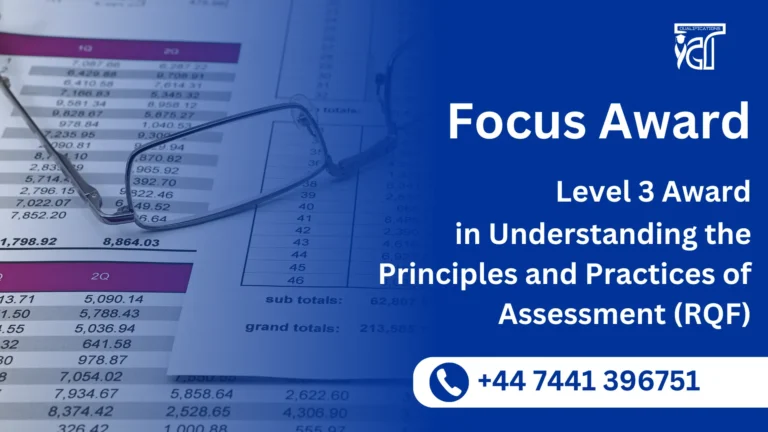The ProQual Level 3 Diploma for Electrical and Mechanical Draughtsman is a specialized qualification designed to provide learners with the essential knowledge and practical skills required to produce accurate technical drawings and designs for engineering projects. This program focuses on developing competence in both electrical and mechanical drafting, ensuring participants can support engineers, architects, and project managers in delivering precise and reliable documentation.
Electrical and mechanical draughtsmen play a vital role in the planning and execution of engineering works. This diploma emphasizes the use of modern drafting techniques, computer-aided design (CAD) tools, and industry standards to prepare learners for professional responsibilities. Participants will gain expertise in interpreting technical specifications, creating detailed schematics, and ensuring compliance with safety and quality requirements across diverse engineering environments.
The qualification is particularly suited for individuals seeking to enter or progress within the engineering and construction industries. Learners will develop practical skills that are directly applicable to roles in manufacturing, power generation, infrastructure, and industrial projects. By completing this diploma, participants will be equipped to contribute effectively to design teams, ensuring that projects are executed with accuracy and efficiency.
Ultimately, the ProQual Level 3 Diploma for Electrical and Mechanical Draughtsman provides a strong foundation for career growth and further study. It opens pathways to advanced qualifications in engineering design, quality assurance, and project management, while also enhancing employability in both local and international markets. With its blend of technical training and professional relevance, this diploma prepares learners to become competent draughtsmen capable of supporting the demands of modern engineering projects.
ProQual Level 3 Diploma for Electrical and Mechanical Draughtsman
This qualification consists of 7 mandatory units. Candidates must complete all mandatory units to complete this qualification
| Sr# | Unit Title | Unit Level | TQT | GLH |
|---|---|---|---|---|
| 1 | Project Planning and Health and Safety | 3 | 55 | 35 |
| 2 | Drawing Office Operations and Equipment | 3 | 110 | 60 |
| 3 | Site Observation and Technical Drawing | 3 | 60 | 40 |
| 4 | Fundamentals of Technical Drawing Application | 3 | 60 | 40 |
| 5 | Computer-Aided Design | 3 | 70 | 60 |
| 6 | Parametric Modelling for Workflows | 3 | 60 | 30 |
| 7 | Electrical and Mechanical Draughting and Technical Communication | 3 | 220 | 150 |
GLH (Guided Learning Hours) and TQT (Total Qualification Time) are terms commonly used in vocational qualifications to help define the amount of time a learner is expected to spend on their studies.
1. GLH (Guided Learning Hours)
GLH refers to the number of hours a learner spends being directly taught, supervised, or supported during their course. This includes the time spent in activities such as:
- Classroom instruction
- Practical workshops
- One-on-one tutoring or mentoring sessions
- Online learning sessions with tutor support
In other words, GLH represents the time that learners are actively engaged with their instructors or learning activities.
2. TQT (Total Qualification Time)
TQT represents the total amount of time a learner is expected to invest in completing a qualification, including:
- GLH (Guided Learning Hours): Time spent on direct learning, as explained above.
- Self-Directed Learning: This includes time spent on independent study, research, assignment completion, preparation for exams, and any other work the learner does outside of direct teaching hours.
TQT is a broader measure that includes all the time required to achieve the qualification. It helps learners and employers understand the overall commitment required for the qualification.
Key Differences Between GLH and TQT:
- GLH focuses on direct learning with guidance or supervision.
- TQT includes GLH as well as independent study time and other learning-related activities.
Example:
If a qualification has a TQT of 600 hours and a GLH of 250 hours, it means the learner should spend 250 hours in direct learning (classroom, online, or tutor-led sessions) and 350 hours on independent study or research.
Learning outcomes of this course ProQual Level 3 Diploma for Electrical and Mechanical Draughtsman:
Project Planning and Health and Safety
Learners will be able to:
- Understand the principles of project planning and management in construction and engineering projects.
- Identify and assess risks associated with electrical and mechanical drafting activities.
- Apply health and safety legislation and site-specific safety procedures effectively.
- Plan tasks and workflows efficiently to meet project deadlines and quality standards.
- Recognize potential hazards in the workplace and implement control measures.
- Demonstrate safe working practices when handling tools, equipment, and materials.
- Promote a culture of safety and compliance within a drafting or construction team.
Drawing Office Operations and Equipment
Learners will be able to:
- Understand the roles and responsibilities within a drawing office environment.
- Use standard office equipment and drawing tools safely and efficiently.
- Maintain accurate records of drawings, revisions, and technical documentation.
- Organize drawing files, templates, and project information systematically.
- Apply effective communication within the drawing office and with project teams.
- Follow office procedures to ensure quality and compliance in document handling.
- Support the efficient workflow of a drawing office while meeting project deadlines.
Site Observation and Technical Drawing
Learners will be able to:
- Conduct site observations to collect accurate information for drafting purposes.
- Identify site-specific requirements and constraints affecting designs.
- Produce technical drawings based on site measurements and observations.
- Apply standard conventions, symbols, and notations in drawings.
- Communicate design intent clearly through accurate and detailed documentation.
- Evaluate existing systems or structures to inform design modifications.
- Ensure site drawings comply with safety, quality, and project specifications.
Fundamentals of Technical Drawing Application
Learners will be able to:
- Understand basic principles and conventions of technical drawing.
- Produce clear and accurate 2D drawings for electrical and mechanical systems.
- Apply geometric and dimensioning techniques to ensure precision.
- Interpret engineering drawings and apply them to project requirements.
- Use technical drawings to support project planning and execution.
- Develop attention to detail and accuracy in all drafting tasks.
- Ensure compliance with industry standards and project specifications.
Computer-Aided Design (CAD)
Learners will be able to:
- Use CAD software to produce accurate 2D and 3D technical drawings.
- Apply drawing, editing, and annotation tools effectively within CAD.
- Manage CAD files, layers, and templates in accordance with project requirements.
- Produce drawings that comply with industry standards and specifications.
- Incorporate design changes efficiently using CAD techniques.
- Demonstrate accuracy, clarity, and professionalism in CAD outputs.
- Integrate CAD workflows into broader project planning and documentation processes.
Parametric Modelling for Workflows
Learners will be able to:
- Understand the principles of parametric modelling in engineering and construction projects.
- Use parametric modelling software to create flexible and adaptable designs.
- Apply constraints, dimensions, and parameters to control model behavior.
- Develop workflows that improve efficiency and reduce errors in design.
- Modify models dynamically to reflect design changes or project updates.
- Integrate parametric models with CAD and technical documentation processes.
- Support collaborative workflows using parametric modelling tools.
Electrical and Mechanical Draughting and Technical Communication
Learners will be able to:
- Produce detailed electrical and mechanical drawings to support project implementation.
- Apply appropriate draughting standards, symbols, and conventions.
- Interpret technical specifications and integrate them into drawings accurately.
- Communicate technical information clearly to engineers, site teams, and stakeholders.
- Use drawing and documentation to support troubleshooting and quality assurance.
- Ensure drawings and documentation comply with project, regulatory, and safety requirements.
- Collaborate effectively with multidisciplinary teams using professional communication skills.
The ProQual Level 3 Diploma for Electrical and Mechanical Draughtsman provides learners with the essential skills and knowledge to produce accurate technical drawings and designs for engineering projects. It combines practical training with industry-relevant expertise, preparing participants to support engineers, architects, and project managers in diverse sectors.
Technical Expertise
- Develop competence in electrical and mechanical drafting techniques
- Gain proficiency in computer-aided design (CAD) tools and software
- Learn to interpret technical specifications and engineering data
- Acquire skills to produce detailed schematics and layouts
- Understand industry standards and compliance requirements
Career Advancement
- Access opportunities in engineering, construction, manufacturing, and infrastructure projects
- Build credibility as a skilled draughtsman in technical environments
- Prepare for roles supporting engineers and project managers
- Enhance employability with practical, industry-focused skills
- Open pathways to international career opportunities
Professional Skills Development
- Strengthen communication skills for presenting technical drawings clearly
- Collaborate effectively with multidisciplinary teams in engineering projects
- Improve problem-solving and analytical abilities
- Focus on accuracy, precision, and quality assurance in drafting work
- Adapt to evolving technologies and industry practices
Organizational Impact
- Contribute to efficient project planning and execution
- Support cost-effective operations by reducing errors and rework
- Ensure compliance with safety and quality standards in documentation
- Provide reliable technical drawings that enhance project delivery
- Add strategic value to organizations through professional drafting expertise
The ProQual Level 3 Diploma for Electrical and Mechanical Draughtsman is designed for individuals who wish to build strong technical skills in drafting and design. The ideal learner is someone motivated to support engineering projects through accurate documentation, technical drawings, and collaboration with multidisciplinary teams.
Technical Background
- Learners with a foundation in engineering, construction, or technical studies
- Individuals familiar with basic drafting concepts and eager to advance their knowledge
- Those interested in using CAD software and modern drafting tools
- Candidates who enjoy working with technical data and design specifications
- Professionals aiming to strengthen their practical and analytical skills
Career Aspirations
- Individuals seeking entry or progression into roles as electrical or mechanical draughtsmen
- Learners aiming to support engineers, architects, and project managers in technical projects
- Professionals preparing for responsibilities in manufacturing, infrastructure, or construction sectors
- Those interested in international opportunities in engineering and drafting fields
- Candidates motivated to achieve recognition and credibility in technical professions
Professional Qualities
- Learners with clear communication skills to present technical drawings effectively
- Individuals who value teamwork and collaboration in engineering environments
- Those committed to accuracy, precision, and compliance with industry standards
- Candidates adaptable to evolving technologies and project requirements
- Professionals with a proactive approach to problem-solving and decision-making
Workplace Contribution
- Learners who aim to improve efficiency and accuracy in project documentation
- Individuals focused on reducing errors and supporting cost-effective operations
- Those committed to ensuring compliance with safety and quality standards
- Candidates who want to contribute to timely and successful project delivery
The ProQual Level 3 Diploma for Electrical and Mechanical Draughtsman provides learners with a strong foundation in drafting and design, opening pathways to higher-level qualifications and career opportunities. It equips participants with the technical and professional skills needed to progress into advanced roles within engineering, construction, and manufacturing industries.
Academic and Professional Qualifications
- Progression to Level 4 and Level 5 diplomas in engineering design or mechanical/electrical disciplines
- Opportunities to pursue specialized CAD certifications and technical training programs
- Access to continuous professional development courses in engineering and construction
- Pathways to advanced qualifications in project management or quality assurance
- Eligibility for professional memberships in technical and engineering bodies
Career Development
- Advancement into roles as senior draughtsman or design technician
- Opportunities to support engineers in complex projects across construction and manufacturing sectors
- Increased employability in industries such as power generation, infrastructure, and industrial design
- Potential to work on international projects requiring advanced drafting expertise
- Preparation for supervisory responsibilities in technical documentation and design teams
Leadership and Specialized Roles
- Development towards consultancy positions in drafting and design support
- Ability to provide technical guidance and mentoring to junior draughtsmen
- Opportunities to contribute to strategic planning and project execution
- Preparation for leadership roles in design offices or engineering departments
- Transition into specialized roles focusing on CAD management or design coordination
Long-Term Opportunities
- Contribution to innovative and sustainable engineering practices worldwide
- Enhanced career stability through advanced technical and managerial competencies
- Ability to adapt to emerging technologies in drafting and design software
- Opportunities to influence industry standards and best practices in technical documentation
- Pathways to lifelong learning and continuous career growth in engineering fields
Entry Requirements
To be eligible for this qualification, learners are expected to meet the following entry requirements :
Register Now
Qualification Process
Qualification Process for the ProQual Level 3 Diploma for Electrical and Mechanical Draughtsman
- Self-Assessment:
Begin by evaluating your eligibility to ensure you meet the qualification requirements, including work experience, knowledge, and language proficiency. - Registration:
Complete your registration by submitting the required documents, including a scanned copy of a valid ID, and paying the registration fee. - Induction:
An assessor will conduct an induction to confirm your eligibility for the course and explain the evidence requirements. If you do not meet the criteria, your registration will be canceled, and the fee will be refunded. - Assignments & Evidence Submission:
Provide all assignments and the necessary evidence based on the assessment criteria outlined in the course. If you are unsure of the required evidence, consult with the assessor for guidance on the type and nature of evidence needed. - Feedback and Revision:
The assessor will review your submitted evidence and provide feedback. Evidence that meets the criteria will be marked as “Criteria Met,” while any gaps will be identified. You will be asked to revise and resubmit if needed. - Competence Evidence:
Submit final evidence demonstrating that all learning outcomes have been met. This evidence will be marked as “Criteria Met” by the assessor once it is satisfactory. - Internal Quality Assurance (IQA):
The Internal Quality Assurance Verifier (IQA) will review your evidence to ensure consistency, quality, and compliance with standards. - External Verification:
The IQA will submit your portfolio to ProQual External Quality Assurance Verifiers (EQA) for final confirmation. The EQA may contact you directly to verify the authenticity of your evidence. - Certification:
Upon successful completion of all checks, ProQual will issue your official certificate, confirming that you have attained the ProQual Level 3 Diploma for Electrical and Mechanical Draughtsman.







